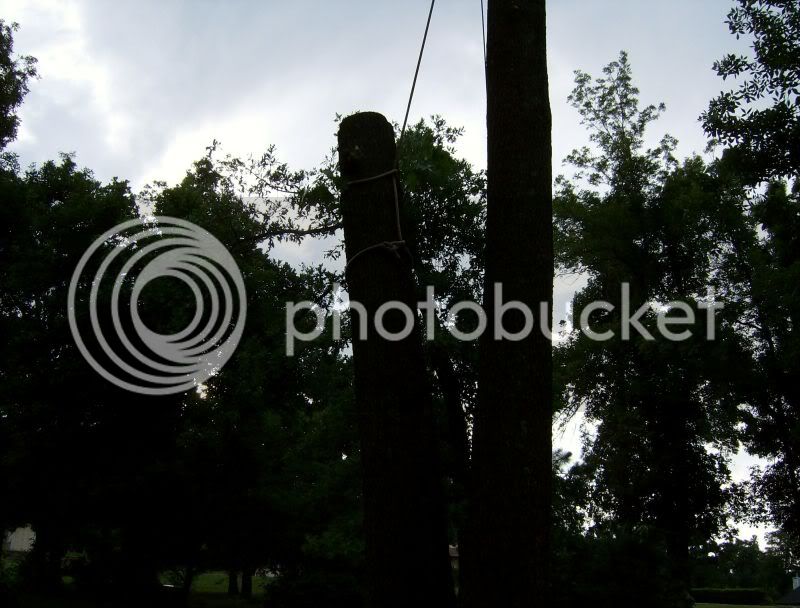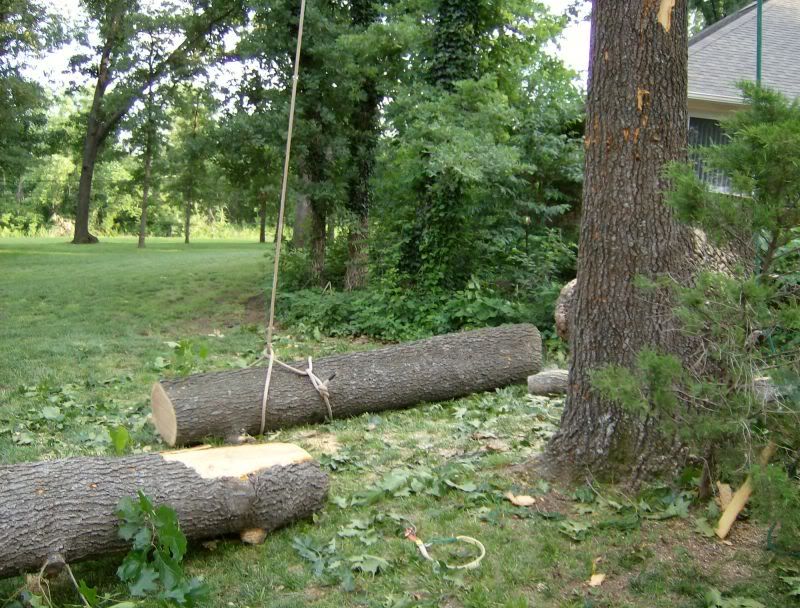tree md
Addicted to ArboristSite
Ever run into a nasty surprise up in the tree even after you have done a pre inspection?
I've had this happen a few times and actually had it happen on a tree I did last week. It was in a tight drop zone, right over the roof and I had a little postage stamp area to lower everything in between the house and the privacy fence in the side yard. I had inspected the tree extensively before entering it trying to figure out how the heck I wanted to lower everything out of it. I had a good natural fork that hung just perfectly over my drop zone and decided to use it.
I lowered pretty much everything off of that lowering point, after I set my bull line in there with the throw line. A couple of the heaviest limbs and chunks I lowered off of their own stem with a block but everything else came down off of my main lowering point. One side of the tree had been completely stripped of limbs because of the nearby power lines. When I worked myself up to a point where some of the older limbs in the top had been removed I found out that there was severe wood rot and hollows where some of the limbs had been removed previously. The defects were obscured by sucker growth and I couldn't see it from the ground.
I thought to myself right then how lucky I was that the tree wasn't any more impaired than it was or I could have had a real problem. I hadn't lowered anything over 500 pounds I doubt and there was very little shock on anything but still it made me think. I wasn't tied in to any points above the defects but it would have still been catastrophic had the limb the lowering line was set in had failed.
I wondered to myself how wise the practice of setting a lowering line from the ground is when you cannot closely inspect the tree by climbing to the lowering point and checking everything out.
I had a similar situation a few years ago but I was actually climbing a leader on a large maple to drop the tip of the limb where it would fall clear of the phase 3 lines. I got about 60' up and found a really bad defect in the leader, bad enough where I though better of climbing past it. I got down, discussed it with the HO and called in a crane. I decided then to put a pair of binoculars in my pack to be able to more closely inspect trees from the ground. I have since got away from that habit.
How do you guys handle those situations? Anyone carry binos with them to inspect the tree? Comments?
I've had this happen a few times and actually had it happen on a tree I did last week. It was in a tight drop zone, right over the roof and I had a little postage stamp area to lower everything in between the house and the privacy fence in the side yard. I had inspected the tree extensively before entering it trying to figure out how the heck I wanted to lower everything out of it. I had a good natural fork that hung just perfectly over my drop zone and decided to use it.
I lowered pretty much everything off of that lowering point, after I set my bull line in there with the throw line. A couple of the heaviest limbs and chunks I lowered off of their own stem with a block but everything else came down off of my main lowering point. One side of the tree had been completely stripped of limbs because of the nearby power lines. When I worked myself up to a point where some of the older limbs in the top had been removed I found out that there was severe wood rot and hollows where some of the limbs had been removed previously. The defects were obscured by sucker growth and I couldn't see it from the ground.
I thought to myself right then how lucky I was that the tree wasn't any more impaired than it was or I could have had a real problem. I hadn't lowered anything over 500 pounds I doubt and there was very little shock on anything but still it made me think. I wasn't tied in to any points above the defects but it would have still been catastrophic had the limb the lowering line was set in had failed.
I wondered to myself how wise the practice of setting a lowering line from the ground is when you cannot closely inspect the tree by climbing to the lowering point and checking everything out.
I had a similar situation a few years ago but I was actually climbing a leader on a large maple to drop the tip of the limb where it would fall clear of the phase 3 lines. I got about 60' up and found a really bad defect in the leader, bad enough where I though better of climbing past it. I got down, discussed it with the HO and called in a crane. I decided then to put a pair of binoculars in my pack to be able to more closely inspect trees from the ground. I have since got away from that habit.
How do you guys handle those situations? Anyone carry binos with them to inspect the tree? Comments?









